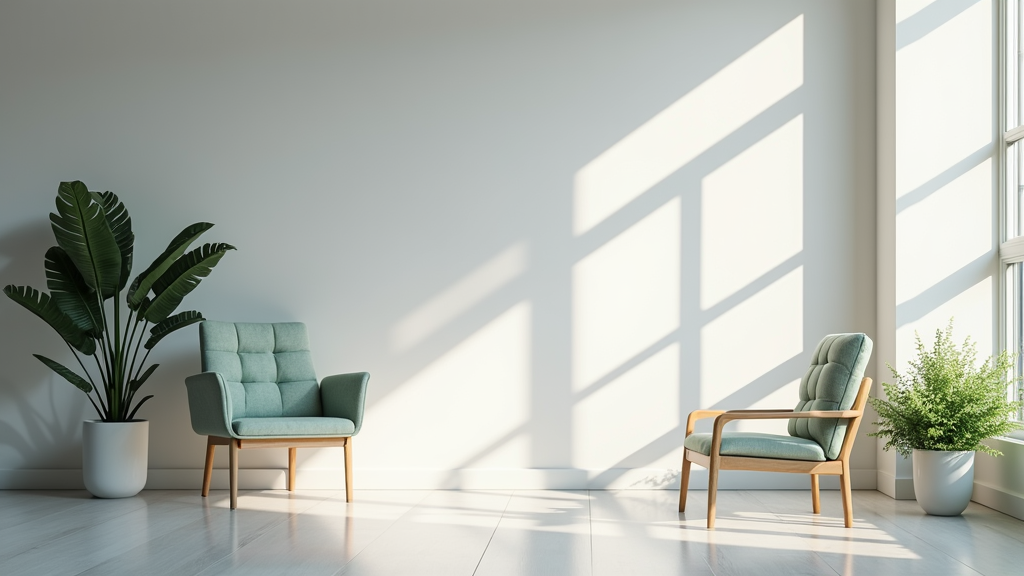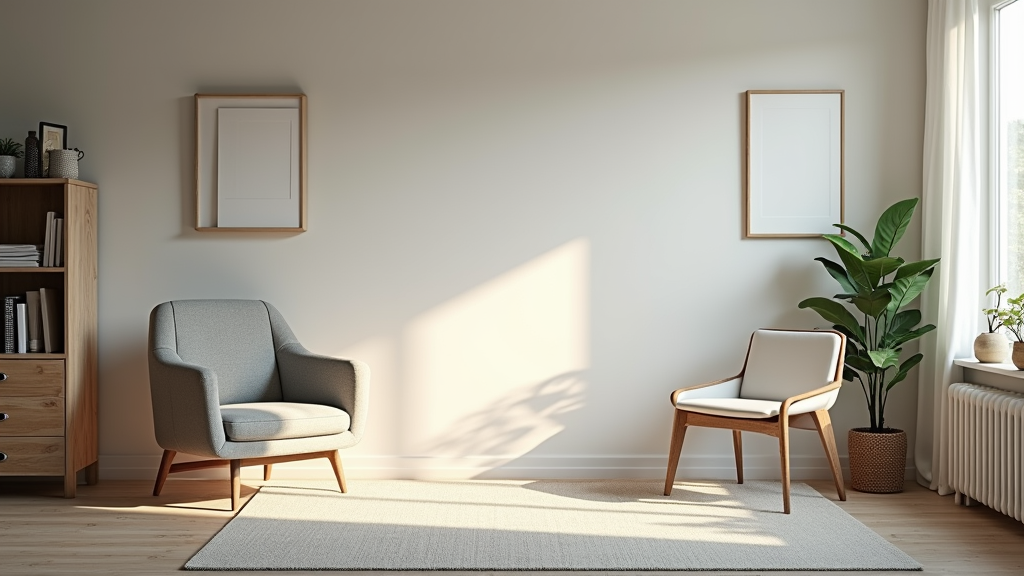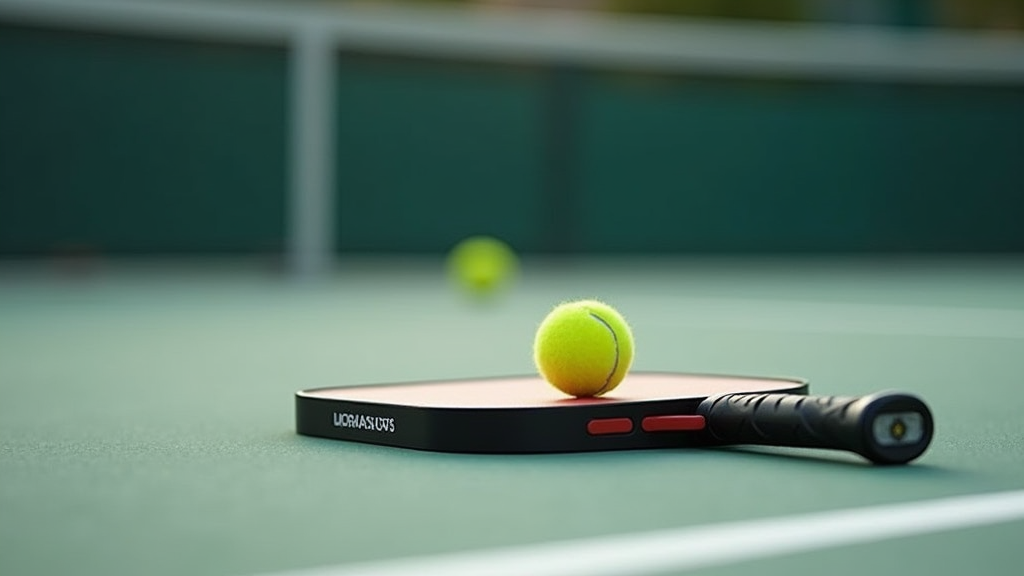Table of Contents
- Introduction
- Finding Clinics Near You: A Comprehensive Look
- Understanding the Basics
- Detailed Guide to Clinic Participation
- Conclusion
Introduction

Overview and Importance
Pickleball’s popularity has exploded in recent years, transforming from a niche pastime into one of the fastest-growing sports in the United States. Participating in pickleball clinics offers a fantastic way to quickly improve your skills, learn the nuances of the game, and connect with fellow enthusiasts. It’s more than just fun; it’s a structured path to mastery and community.
Pickleball isn’t just trending; it’s booming. Recent data shows participation increased by 35% in the last year alone, proving its widespread appeal and accessibility.
Why does this matter? Structured learning environments, like pickleball clinics, provide a focused approach to skill development, allowing players to improve their game much faster than they would on their own. Clinics also offer a valuable social aspect, fostering a sense of community and providing opportunities to meet new people who share a passion for the sport.
Background
The story of pickleball begins in 1965 on Bainbridge Island, Washington. Legend has it that Joel Pritchard and Bill Bell, looking for a way to entertain their bored children, cobbled together equipment and rules, inadvertently inventing a new sport. Using a wiffle ball, ping-pong paddles, and a badminton court, they laid the foundation for what would become a national phenomenon.
From its humble beginnings as a backyard game, pickleball has evolved into a recognized sport with a growing professional scene. The increasing availability of dedicated pickleball courts and clinics across the country reflects this growth, making it easier than ever for people of all ages and skill levels to participate.
What You’ll Learn
Whether you’re a complete beginner or an experienced player looking to refine your technique, pickleball clinics offer valuable insights and practical skills. You’ll gain a solid understanding of the core concepts that underpin the game.
- Rules of the game: Learn the official rules and regulations that govern pickleball play.
- Basic strokes and techniques: Master essential strokes like the serve, dink, volley, and groundstroke.
- Court positioning and strategy: Understand where to be on the court and how to anticipate your opponent’s moves.
Clinics go beyond theory, providing opportunities to put your knowledge into practice.
- Improve your game through drills and practice: Participate in targeted drills designed to hone specific skills.
- Apply strategies in real game scenarios: Learn how to implement strategic plays and adapt to different opponents.
- Find local playing opportunities and communities: Discover local courts, leagues, and groups where you can continue to play and improve.
Finding Clinics Near You: A Comprehensive Look
YMCA Options in Greensboro, NC
The YMCA in Greensboro, North Carolina, offers a fantastic array of pickleball programs for all skill levels. From open play to structured lessons and even competitive leagues, the YMCA provides ample opportunities to get involved in the sport. Here’s a breakdown of what’s available at different locations:
- Bryan YMCA (Downtown Greensboro):
- Hayes-Taylor YMCA (Southeast Greensboro):
- Ragsdale YMCA (Jamestown):
- Spears YMCA (Northwest Greensboro):
- Open Play: Mondays (11 a.m.-1 p.m.), Tuesdays (11 a.m.-2:30 p.m.), Fridays (6-8 a.m.), Sundays (1-3 p.m.)
- Advanced Lessons with Bob Arms: Tuesdays (2:30-3:30 p.m.)
- Learn to Play Pickleball: Thursdays (12-3 p.m.)
- Competitive Play: Wednesdays (11 a.m.-1 p.m.)
- Spring Pickleball League: Challenger (Wednesdays, 6-8 p.m.), Social (Mondays, 5:30-7:30 p.m.)
- Membership Fee: $50, Non-Member: $60
- Registration: January 27-March 16.
- Pickleball Play: Wednesdays & Thursdays (12-2 p.m.)
- Spring Pickleball Leagues: Challenger & Social (Registration Required)
- Pickleball Play: Weekdays (8-11 a.m., Summer: 7-9 a.m.), Saturdays (8-10 a.m.), Sundays (1-3 p.m.)
- Location: Court 1 and Court 2
- Ages 18+
- Membership Fee: $60, Community: $90
- Free Beginner Clinics: Thursdays (1 p.m., Registration Required)
- Pickleball 102 Classes: Bi-weekly (Tuesdays/Thursdays, 2-3 p.m.)
- Play Hours: Monday-Friday (5 a.m.-3 p.m.), Sunday (12-3 p.m.)
- Fee: $100 (Members), $160 (Community/Guest)
Important: Schedules can change, so it’s always best to contact the specific YMCA branch directly to confirm times and availability. A quick phone call can save you a trip and ensure you get the most up-to-date information.
Tennisbloc Programs in North Carolina
Tennisbloc offers seasonal pickleball programs designed to be affordable and accessible for both juniors and adults, focusing on beginner and intermediate players. Their philosophy centers around creating a positive, inclusive, and engaging environment where participants can build solid technical foundations.
Tennisbloc uses slightly smaller courts than traditional tennis courts, making the game more manageable and fun, especially for beginners. They also utilize graphite paddles and a wiffle ball-like ball, which is easier to control and reduces the impact on joints.
Their classes are structured to provide comprehensive learning:
- Beginner Classes:Focus on the rules of the game, fundamental techniques, conditioning, drills, and strategy games.
- Intermediate Classes:Emphasize consistency, strategy development, practice scenarios, and competitive activities.
Tennisbloc also provides easy access to matchplay, allowing participants to put their skills into practice in a friendly and supportive setting.
2024 Knightdale Pickleball Program (Harper Park, Knightdale, NC):
- Address: 209 Main St, Knightdale, NC 27545
- Seasons: Fall, Winter, Spring, Summer
- Target Audience: Adults (Beginner, Intermediate)
- Requirements: Paddle, water bottle, athletic attire, sun protection.
For more information about Tennisbloc programs, you can contact them via email at RyanFleming@TennisBloc.com or info@tennisbloc.com, or by phone at 847-770-8577.
Pickle Place Clinics
Pickle Place clinics are known for their structured training approach, emphasizing techniques, strategies, and fundamental skills. They offer a range of clinics tailored to different skill levels, ensuring players receive instruction appropriate for their current abilities.
- Paddle Up – Beginners Clinic:
- Game Changer – Advanced Beginners Clinic:
- Competitive Edge – Intermediate Clinic:
- Champions Court – Advanced Intermediate Clinic:
- Designed for individuals who have never played pickleball before.
- Focuses on teaching basic skills through low-key drills.
- Equipment is provided for participants.
- Ideal for players who have mastered the basic skills and are looking to improve their game.
- Focuses on key shots like serves, dinks, and drop shots.
- Incorporates drills, skill-based games, and training aids.
- Participants are required to bring their own paddle.
- Geared towards players with a skill rating of 3.0.
- Covers more complex shots, anticipation techniques, and advanced game strategies.
- Focuses on real game play scenarios to enhance decision-making.
- Designed for players with a skill rating of 3.5 to 4.0.
- Focuses on refining advanced techniques and strategies for higher-level competition.
- Utilizes advanced Playsite training technology for personalized feedback and improvement.
For specific schedule, location, and registration details for Pickle Place clinics, it’s best to contact Pickle Place directly. They can provide you with the most current information on upcoming clinics and availability.
Open Play Schedules: A Deeper Dive
Open play is a great way to practice your pickleball skills and meet other players. Many facilities offer designated times for open play, allowing you to drop in and join games. Here’s a detailed look at a sample open play schedule:
General Schedule:
- Mondays-Fridays: 8:30am-12:30pm on two courts
- 7:00am-1:00pm
- 12:00-2:00pm
- North Gym (Back Half 8:30am-2:30pm)
- South Gym (12:00-3:00pm)
Specific Day Schedules:
- Tuesday: North Gym Back Half 8:30am-2:30pm, South Gym 8:30am-3:00pm
- Wednesday: North Gym Back Half 8:30am-2:30pm, South Gym 12:00-3:00pm
- Thursday: North Gym Back Half 8:30am-2:30pm, South Gym 8:30am-3:00pm
- Friday: North Gym Back Half 8:30am-2:30pm, South Gym 12:00-3:00pm
- Saturday: South Gym 8:00am-12:30pm (one court unavailable 8:00-10:00am due to clinics)
Additional Open Play Hours:
- Monday-Friday: 9:30-11:30am and Tuesday-Friday 5:30-7:30pm
- Mondays, Wednesdays, Fridays: 5:00-11:00am (Full Gym, 3 courts available)
- Tuesdays & Thursdays: 5:00-11:00am (Court 1 only, 1 court)
- Saturdays: 8:00-11:00am (Full Gym)
Sunday Open Play: 1:00-4:00pm
Important Notes: Keep in mind that out-of-school days, inclement weather, and scheduled teaching clinics can sometimes affect the open play schedule. To avoid any surprises, it’s always a good idea to verify the exact location and details by visiting local pickleball facilities or checking online resources before heading out to play.
Understanding the Basics

Fundamental Concepts
Pickleball, while seemingly simple, rests on a foundation of fundamental concepts that are crucial for success and enjoyment. Understanding these basics will significantly improve your game, allowing you to play strategically and confidently.
- Key definitions:
- Dinking: This refers to a soft shot, typically executed near the net, designed to land in the non-volley zone (kitchen). It’s a strategic play used to control the pace and positioning of your opponents.
- Volley: A volley is when you hit the ball in the air before it bounces. This is a common tactic at the net but is prohibited within the non-volley zone.
- Non-volley zone (kitchen): This is the area within 7 feet of the net on both sides. Players cannot volley the ball while standing within this zone. The kitchen adds a unique strategic element to the game, requiring players to be mindful of their positioning and shot selection.
Beyond definitions, understanding the core principles of pickleball is essential for developing a well-rounded game.
- Core principles:
- Third shot drop: This is a strategic shot executed after the serve and return, aimed at landing softly in the opponent’s kitchen. The goal is to approach the net safely and avoid giving your opponents an easy volley opportunity. Mastering the third shot drop is vital for transitioning from the baseline to an offensive net position.
- Court positioning: Being in the right place at the right time is crucial in pickleball. Effective court positioning allows you to cover more ground, react quickly to your opponent’s shots, and control the flow of the game. This involves anticipating your opponent’s moves and adjusting your position accordingly.
- Communication: Especially in doubles, clear and concise communication with your partner is key to coordinating plays and avoiding confusion. Call out shots, discuss strategy, and support each other’s movements on the court. Effective communication leads to better teamwork and ultimately, a more successful game.
Essential Components
To play pickleball, you’ll need some essential equipment. Understanding the key features of each component can significantly impact your performance and enjoyment of the game.
- Required elements:
- Paddle: The paddle is your primary tool for hitting the ball. Standard pickleball paddles are approximately 8 inches wide and 16 inches long, but variations exist.
- Ball: Pickleball uses a perforated plastic ball, typically around 2.9 inches in diameter. The ball has approximately 40 holes, which affect its flight and speed.
- Net: The net is a crucial part of the playing field. It stands 36 inches high at the sidelines and 34 inches high in the center.
Beyond the basic requirements, several key features can influence your gameplay.
- Key features to consider:
- Primary aspects:
- Secondary aspects:
- Important variations:
- Paddle weight: The weight of your paddle significantly affects your control and power. A common weight range is between 7.5 and 8.5 ounces, but the ideal weight depends on your playing style and preference. A lighter paddle offers more control, while a heavier paddle provides more power.
- Grip size: A comfortable grip is essential for maintaining control and preventing injuries. To determine the appropriate grip size, measure the distance from the tip of your ring finger to the second line on your palm.
- Ball material: Different ball materials are designed for indoor and outdoor play. Outdoor balls are typically more durable and heavier to withstand wind and rougher surfaces, while indoor balls are softer and bounce more consistently on smooth surfaces.
- Court surface: The court surface affects the ball’s bounce and player movement. Hard courts, such as asphalt or concrete, are common and provide a consistent bounce. However, other surfaces like clay or wood can offer different playing experiences.
- Paddle shape: Paddle shapes vary, with elongated and standard shapes being the most common. Elongated paddles offer more reach and a larger sweet spot, while standard paddles provide better control and maneuverability.
- Net material: The durability and tension of the net are important for consistent play. A high-quality net made of durable material will maintain its tension and shape over time, ensuring fair and accurate gameplay.
Detailed Guide to Clinic Participation
Preparation
Proper preparation is crucial for maximizing your learning and enjoyment during a pickleball clinic. By taking the time to organize yourself beforehand, you’ll be able to focus fully on the instruction and drills, ultimately enhancing your skill development.
- Required materials:
- Comfortable athletic clothing and shoes are a must for ease of movement on the court.
- Bring a water bottle to stay hydrated throughout the clinic. Pickleball can be surprisingly demanding!
- If the clinic doesn’t provide paddles, be sure to bring your own. Ensure it’s in good condition and suitable for your playing style.
- A small towel can be handy for wiping away sweat, especially during intense drills.
Getting ready at the venue is just as important.
- Initial setup:
- Arrive at least 15 minutes early to check in, find your court, and get settled. This will also give you time to mentally prepare for the session.
- Begin with a light warm-up, including stretching and jogging, to prevent injuries and loosen your muscles. Focus on areas like your shoulders, legs, and wrists.
- Take a moment to introduce yourself to the instructor and other participants. Building rapport can make the learning environment more comfortable and collaborative.
Finally, here are a few things to consider.
- Important considerations:
- Before the clinic begins, inform the instructor of any physical limitations or pre-existing injuries you may have. This allows them to tailor instructions to your needs and prevent further injury.
- Set realistic goals for the clinic. Focus on improving specific aspects of your game rather than trying to master everything at once.
- Maintain an open mind and be receptive to feedback from the instructor and other participants. Constructive criticism is invaluable for identifying areas for improvement.
Step-by-Step Process
A structured approach to participation will help you absorb information effectively and translate it into improved gameplay. This involves active listening, focused practice, and mindful execution.
- Clear instructions:
- Pay close attention to the instructor’s explanations of techniques and strategies. Don’t hesitate to ask questions if anything is unclear.
- Carefully observe the instructor’s demonstrations of each drill or skill. Note the key elements of their form and technique.
- When practicing drills, concentrate on executing the techniques correctly. Quality reps are more valuable than simply going through the motions.
To make the most of your practice time, consider these best practices.
- Best practices:
- Ensure you have a proper grip on the paddle and maintain a balanced stance. These fundamentals are crucial for control and power.
- Pay attention to your footwork and court positioning. Being in the right place at the right time is essential for success in pickleball.
- When practicing with a partner, communicate clearly and effectively. Coordinate your movements and strategies to maximize your effectiveness.
Even experienced players can fall into traps. Here are some common mistakes to avoid:
- Common mistakes to avoid:
- Avoid overhitting the ball, which can lead to errors and a loss of control. Focus on controlled shots with good placement.
- Don’t neglect footwork. Many players focus solely on their paddle skills, but footwork is equally important for reaching the ball and maintaining balance.
- Ensure that you are communicating with your partner. Failure to do so can lead to confusion and missed opportunities.
Advanced Techniques
Once you’ve grasped the fundamentals, you can begin exploring more advanced techniques to elevate your game. This involves refining your skills, optimizing your performance, and addressing any challenges you encounter.
- Expert tips:
- Develop a consistent and reliable serve. A good serve puts you in a strong position to start the point.
- Master the third shot drop, which is a crucial skill for controlling the pace of the game and gaining an advantage at the non-volley zone line.
- Refine your dinking skills, which are essential for close-quarters play at the net. Focus on soft, controlled shots that are difficult for your opponent to attack.
Here are some ways to optimize your development:
- Optimization methods:
- Record your games and practices to analyze your performance. Identifying your strengths and weaknesses is the first step toward improvement.
- Seek feedback from experienced players or coaches. An outside perspective can often reveal areas for improvement that you may not have noticed yourself.
- Participate in competitive leagues or tournaments to test your skills and gain experience in pressure situations.
Even with the best instruction, you may encounter challenges. Here is some troubleshooting advice.
- Troubleshooting:
- If you’re struggling with a particular shot or technique, don’t hesitate to ask the instructor for personalized instruction.
- Don’t be afraid to experiment with different techniques and strategies to find what works best for you.
- Remember that improvement takes time and effort. Stay patient and persistent, and your skills will gradually improve.
Conclusion

Recap of Key Points
Pickleball clinics offer a fantastic avenue for players of all levels to enhance their skills, learn new strategies, and connect with the pickleball community. From mastering fundamental techniques to developing advanced gameplay tactics, the benefits of participating in well-structured clinics are undeniable. Remember, the key is to identify clinics that align with your current skill level and specific goals, ensuring a rewarding and productive learning experience.
Whether you’re a beginner looking to grasp the basics or an experienced player aiming to refine your competitive edge, the right pickleball clinic can provide the focused instruction and personalized feedback you need to elevate your game.
Final Thoughts
Pickleball is more than just a sport; it’s a vibrant and inclusive community that welcomes players of all ages and abilities. We encourage you to explore the pickleball opportunities available in your local area and discover the joy of this rapidly growing game.
Beyond the skill development and physical benefits, pickleball offers a unique social experience. The fun, camaraderie, and friendly competition are what truly make this sport special. So, grab a paddle, find a court, and get ready to experience the excitement of pickleball!
Resources and Next Steps
Ready to take your pickleball journey to the next level? Here are some resources to help you get started:
- USA Pickleball Association (USAPA)- Find local clubs, tournaments, and resources.
- Your Local Parks and Recreation Department- Check for pickleball programs and facilities in your area.
We highly recommend signing up for a beginner pickleball clinic to learn the fundamentals and build a solid foundation. It’s a great way to meet other players and get comfortable on the court.
We’d love to hear about your pickleball experiences! Please share your thoughts, tips, and stories in the comments below. What are your favorite aspects of pickleball, and what advice would you give to new players?

